I attended a very interesting presentation this week, looking at the potential future for our urban green spaces and how they could be maintained - and because it's 2020 I didn't even leave my desk to participate.
The event was the latest in Husqvarna's Living City series of conferences. In years gone by I've traveled to places including Edinburgh, Stockholm and Hamburg to attend these presentations. But with the events of this year, it all took place online. Usually the days are attended by a mixture of turfcare professionals from many countries, representing various specialisms, plus members of the trade press from around the world. By not encouraging these people to travel this year, I suppose they were at least adding to the green credentials that the event is promoting.
The big reveal on Tuesday was a new robotic mowing development from the manufacturer for the commercial turf sector, that the company is hyping as "game changing".
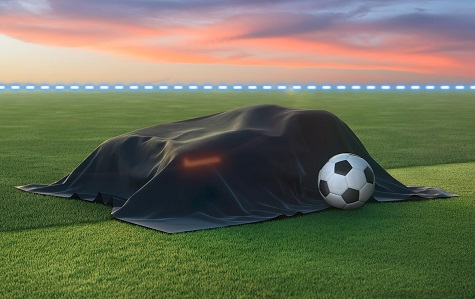
Sustainable urban green maintenance
Before they got to their big announcement though, attendees watched a series of presentations, discussing ideas which could impact on the future of sustainable urban landscaping.
First up was architect, Winy Maas of MVRD who was talking about the concept of 'Green Dip' in cities. This vision was pretty much as it sounds - dipping our urban centres in as much green as possible. We were shown concept drawings of urban sprawls, bursting with buildings covered in plants and greenery flowing from their roofs and walls. It was all about a future vision of filling our streets and skylines with as much bio-diversity as possible. He also talked about real world examples in places like Seoul and Rotterdam where these concepts are starting to come to fruition.
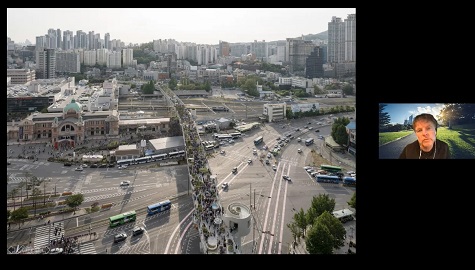
Winy Maas
If these visions of cities full of greenery contributing to the world's environmental betterment come to pass, it would follow that the kit which is used to maintain them would need to meet stringent environmentally-friendly criteria.
Also invited by Husqvarna to speak was Dan Mabe, CEO and founder of the American Green Zone Alliance (AGZA). This group's mission is to transition the grounds maintenance industry to a greener, more sustainable way of working. He spoke with a passion about the amount of solid and toxic waste streams that could be generated by turf professionals using petrol powered equipment. His organisation were working with companies and local authorities in the States to designate green zones in towns, where only battery or robotic groundscare solutions could be operated. They also saw it as their duty to inform private homeowners of tools they could use to maintain their green areas which created less noise, emissions and vibrations.
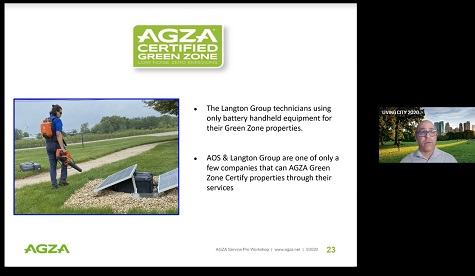
Dan Mabe
Dan's central thesis was that as turfed areas will play an ever more central role in our future towns and cities, it's important for everybody that the carbon footprint related to the maintenance of these areas, is brought down.
Increased sustainability
Husqvarna also had a couple of their own people speaking before the sneak peak at the new robotic system. Erik Swan, their digital ecosystem strategist, talked about the company's HUGSI project - which is a computer system for measuring, analysing and quantifying the greenness of cities around the globe.
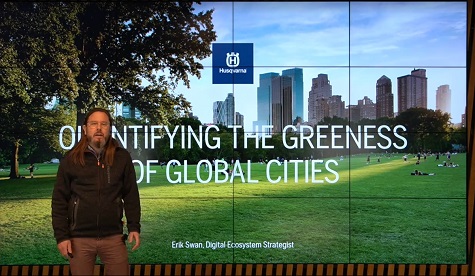
Erik Swan
You can check out the website for the project here which ranks cities in terms of the size of their greened areas and follows the yearly developments of individual cities.
Jonas Willaredt, the manufacturer's head of environment & sustainability also gave a presentation on the carbon footprint in lawncare. He talked about how Husqvarna as a company have policies in place to reduce their own carbon footprint in line with the Paris agreement. They would be making strides towards this he said, through increased electrification and digitalisation across all that they do.
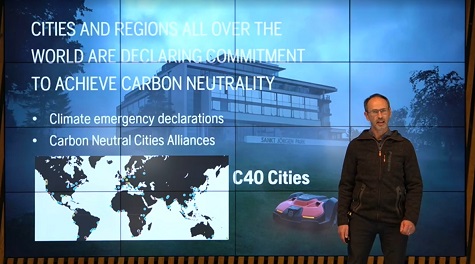
Jonas Willaredt
A commitment was stated to cut carbon emission from both equipment production processes and from the professional usage of their machines. This would be supported, Jonas said, by production innovation.
Robotic "game changer"
Which brought us on to the big sneak peak of the day. Never one to undersell a product launch, Husqvarna unveiled this week what they described as a "pivotal moment" in the history of professional turfcare.
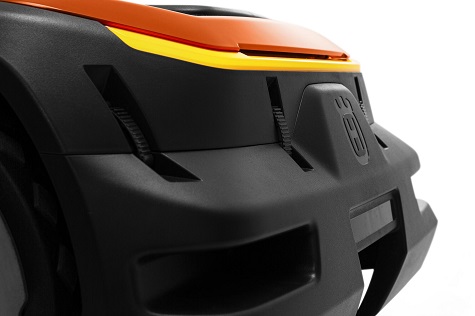
Their latest development in robotic mowing solutions was revealed for the first time. Known as the Ceora, this autonomous mower, we were told, can mow huge areas, up to 50,000 m2, within virtual boundaries.
Intended for public and commercial landowners, sports field managers and golf course owners, Husqvarna said the new machine can automate professional lawnmowing as never before, allowing staff to be redeployed to focus on more value adding tasks. “This is an industry game changer marking the start of a new era in commercial turf care management”, enthused Valentin Dahlhaus, vice president at Husqvarna.
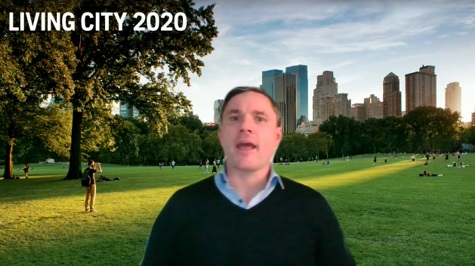
Valentin Dahlhaus
The size of the area which the robot can cover, combined with the lack of requirement of an installed boundary wire to control its cutting area, are the fundamental differences of this development over established Automowers. The company said it utilises EPOS technology with a high-precision satellite navigation system, to deliver an accuracy of 2-3 centimetres.
By allowing operation without physical wires, quick digital redefinitions of the work area can take place. Husqvarna believe that this will offer professional users lower costs, a safer working environment and more sustainable working practices.
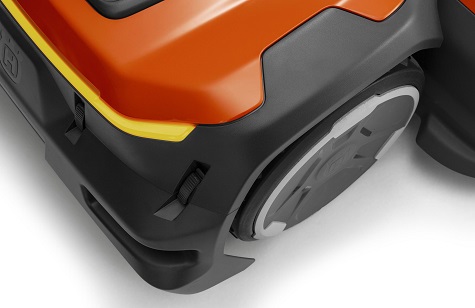
Interestingly, the company stressed how the system is a future-proof, scalable platform. In the future, they said, it can be further tailored to specific needs. By adding accessories like, for example, a lawn striper, fairway deck or a line painter, it can be used to undertake other tasks required by the turf professional. It can also be paired with other robotic mowers allowing the operator instant and continuous digital monitoring and control of multiple units.
For a sense of the scale which these Ceora robots could cover, Valentin Dahlhaus claimed the entire 55-acre Great Lawn in Central Park, NYC, can be managed by five of the units, working 24/7. "Everything is digitally monitored and controlled at your fingertips," he said.
The company promised that more details about the machines will be presented during summer 2021 and mowers will start shipping to customers from early 2022.
It was certainly a very interesting presentation by Husqvarna this week. Massively scaling up the area which a robotic mower can cover and, crucially, removing the need for a guide wire, are the barriers which needed to be broken I'm sure, to get more commercial users to consider their usage.
Also they seem to tick the boxes for contractors who can drop the machines off at a commercial site, let them do their work, and then come back and take them on to the next site. We are told that the sharing economy will grow exponentially - innovations such as this could very much play into that.
It'll be interesting to see and hear more in 2021. Perhaps in person next time?